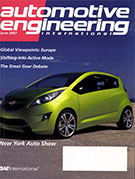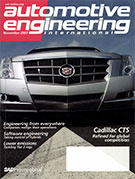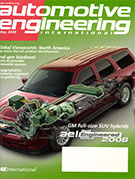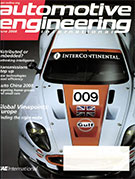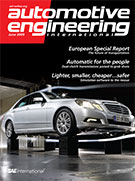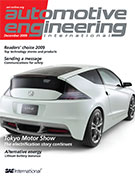Magazine

Automotive Engineering International 2004-08-01
2004-08-01
Success by design Toyota is working to differentiate itself from the competition by continually evolving its unique design philosophy. China overcapacity overstated? Automakers and suppliers are taking a "build it and they will come" approach to capacity in China. Challenges aplenty in China From an underdeveloped infrastructure to insufficient policing of intellectual property rights, government and industry leaders in China are dealing with a multitude of challenges--and opportunities--as vehicle sales soar. Testing adapts Growing vehicle complexity, globalization, and other industry trends are prompting companies to focus more on automation and standardization in their test programs. Lightweight vehicle engineering Demand for performance and fuel economy make materials once considered too expensive increasingly attractive.



